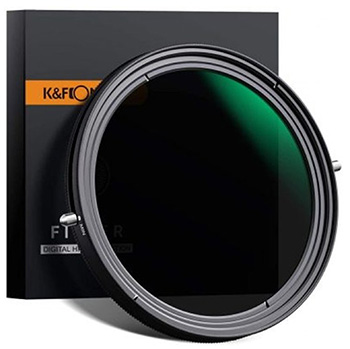Tip #983: What Are ND Filters?
… for Random Weirdness
Tip #983: What Are ND Filters?
Larry Jordan – LarryJordan.com
ND filters provide more control over the image by limiting the light hitting the lens.


This article, written by Alejandro Medellin, first appeared in Shutterstock.com. This is an excerpt.
ND (neutral-density) filters reduce the amount of light passing through a lens, making it easier to shoot in brightly-lit conditions. These are a lot like a pair of sunglasses in that it blocks out or darkens the image to negate the effects of harsh light.
Optical density on an ND filter measures the f-stop reduction of a particular filter, with higher-level filters blocking more light. Most manufacturers measure optical density by applying a number next to “ND,” such as ND2.
Starting from ND2, which is equivalent to one f-stop reduction and the lowest-level ND filter manufactured, each subsequent ND rating produces one more f-stop reduction. Using an ND2 filter with the aperture set to f/2.8 creates an image that appears as if it was shot with an aperture of f/4. Using an ND4 filter would be equivalent to two f-stop reductions. An ND8 filter would be comparable to three f-stop reductions, and so forth.
As a rule of thumb, each level lets in half as much as light as the one before — e.g., an ND64 filter lets in half as much light as an ND32 filter.
ND filters are useful for capturing images that require long exposure times. When photographing a body of water, for example, setting a long exposure time creates a smoothing effect that makes the water appear serene and glass-like.
Shooting video in broad daylight is challenging. You either have to adjust your aperture or shutter speed to get the shot you want, but that’s not always the best idea. Decreasing the aperture may let in less light, which is perfect when shooting in bright conditions, but it also eliminates the shallow depth of field, bringing everything into focus. If you need shallow depth of field in a shot, changing the aperture isn’t viable. That leaves changing the ISO or shutter speed instead.
You need to know three things before purchasing an ND filter:
- The difference between fixed and variable ND filters,
- what’s a combo ND and CPL filter,
- and ND filter sizing.
The article goes to to describe different filters and has an excellent discussion of shutter speed vs. frame rate. The author also has suggestions on which ND filters to buy, depending upon your budget.
Click the link at the top to learn more.


Leave a Reply
Want to join the discussion?Feel free to contribute!